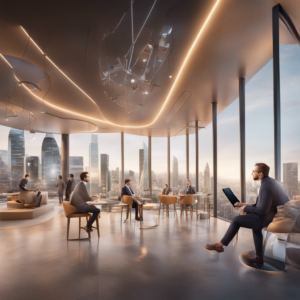 The Pendulum of Workplace Models: Shifting from Permanent to Hot Positions and Back Again
The Pendulum of Workplace Models: Shifting from Permanent to Hot Positions and Back Again
In the ever-evolving landscape of workspace management, companies have experienced a notable shift in their approach to optimizing office spaces. This shift resembles a pendulum, swinging back and forth between two predominant models: the Permanent Position Resettlement Model and the Hot Position Model. Understanding this pendulum swing is essential for tech companies like yours that provide Space Management SAAS solutions to adapt and provide value in a dynamic environment.
Permanent Position Resettlement Model
At one end of the pendulum’s arc, we find the Permanent Position Resettlement Model. This model was the cornerstone of traditional office setups. Companies assigned permanent workstations to employees, creating an environment of stability and familiarity. The advantages were clear: employees had their own spaces, which fostered a sense of belonging, and managers could easily monitor their teams.
However, this model had its drawbacks. It often led to underutilized space as employees were not always present at their desks. It also limited collaboration, as employees were tethered to their designated workstations. In the fast-paced tech industry, adaptability is crucial, and this model struggled to accommodate changing business needs.
The Swing to Hot Position Model
As companies sought greater flexibility and cost-effectiveness, the pendulum began to swing toward the Hot Position Model. This model embraced the concept of flexible seating arrangements. Employees no longer had permanent desks; instead, they utilized a shared workspace, choosing their spot each day. This approach reduced space costs and encouraged collaboration as employees interacted with different colleagues regularly.
The Hot Position Model aligned with the rise of remote work and mobile technology, allowing employees to work from various locations. Tech companies like yours played a pivotal role in facilitating this transition with Space Management SAAS solutions that helped manage reservations, track space utilization, and provide employees with real-time data on available workspaces.
The Return to Permanent Positions
However, as the world witnessed the impacts of the COVID-19 pandemic, the pendulum began its return journey towards the Permanent Position Resettlement Model. Health and safety concerns prompted organizations to rethink open-plan offices and shared workspaces. Many companies reintroduced permanent positions but with a twist—incorporating technology-driven solutions to enhance safety and employee experience.
This adaptation showcased the agility of tech companies in the space management sector. Your industry expertise allowed organizations to implement solutions like contactless check-ins, desk booking with social distancing in mind, and enhanced cleaning protocols. These innovations made a return to permanent positions feasible while addressing health concerns.
Balancing Act for the Future
As the pendulum continues to swing, it’s clear that the future of workspace management is a delicate balancing act. Companies will need to find a middle ground that combines the benefits of both models—a hybrid approach that provides employees with flexibility while maintaining a sense of belonging and security.
For tech companies like yours, this means staying at the forefront of innovation. Continuously evolving your Space Management SAAS solutions to cater to the changing needs of businesses will be key. Your role in helping organizations strike this balance is pivotal in this ever-shifting landscape.
In conclusion, the pendulum’s movement from permanent position resettlement models to hot position models and back again illustrates the adaptability and innovation within the space management industry. The key to success lies in understanding the unique needs of each organization and providing solutions that facilitate their journey along this pendulum, creating the optimal workspace for their employees and business objectives.
 The Pendulum of Workplace Models: Shifting from Permanent to Hot Positions and Back Again
The Pendulum of Workplace Models: Shifting from Permanent to Hot Positions and Back Again